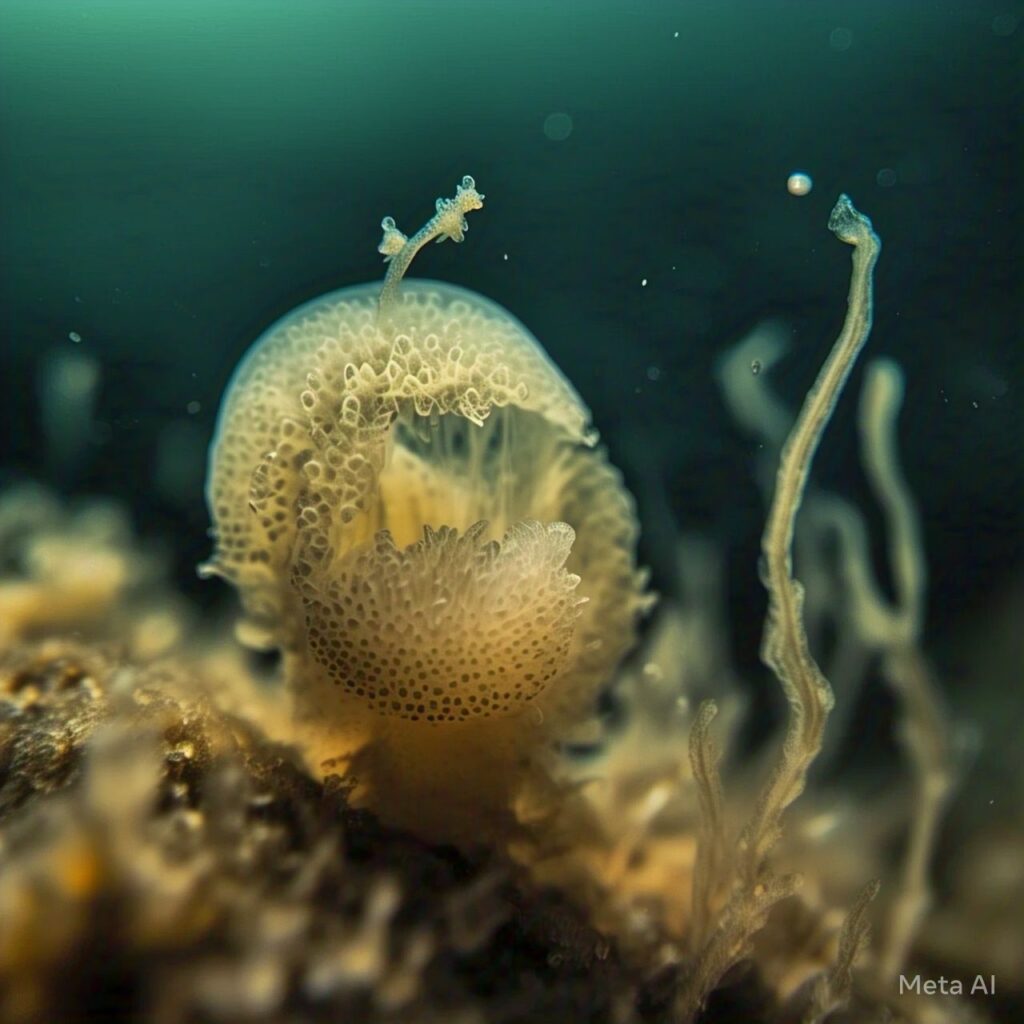Subtopic: Phylum Porifera

General Characteristics:
- Common Name: Sponges
- Habitat: Generally marine (mostly saltwater), some freshwater species exist.
- Symmetry: Mostly asymmetrical (no defined body shape).
- Organization: Primitive multicellular animals with cellular level of organization (cells perform specific functions, but no true tissues or organs).
Water Transport System (Canal System):
- Function: Essential for food gathering, respiratory exchange (oxygen and carbon dioxide), and waste removal.
- Pathway:
- Water enters through numerous small pores called ostia (in the body wall).
- Water flows into a central cavity called the spongocoel.
- Water exits the spongocoel through a larger opening called the osculum.
- Choanocytes (Collar Cells): Specialized flagellated cells that line the spongocoel and canals. Their flagella create water currents and trap food particles.
Other Physiological Processes:
- Digestion: Intracellular (occurs within individual cells).
- Skeleton: Provides structural support. Composed of:
- Spicules: Small, needle-like or star-shaped structures made of calcium carbonate or silica.
- Spongin Fibers: Tough, flexible protein fibers.
Reproduction:
- Sexes: Not separate (hermaphrodite) — both eggs and sperm are produced by the same individual.
- Asexual Reproduction:
- Fragmentation: A piece of the sponge breaks off and can develop into a new individual.
- Sexual Reproduction:
- Gametes: Eggs and sperm are produced.
- Fertilization: Internal (occurs within the sponge’s body).
- Development: Indirect, meaning there is a larval stage that is morphologically distinct from the adult sponge. The larva is free-swimming and eventually settles and metamorphoses into an adult.


Examples: Sycon (Scypha), Spongilla (Fresh water sponge) and Euspongia(Bath sponge).
